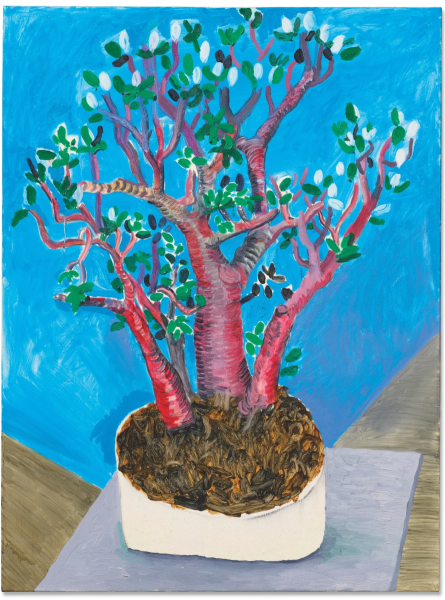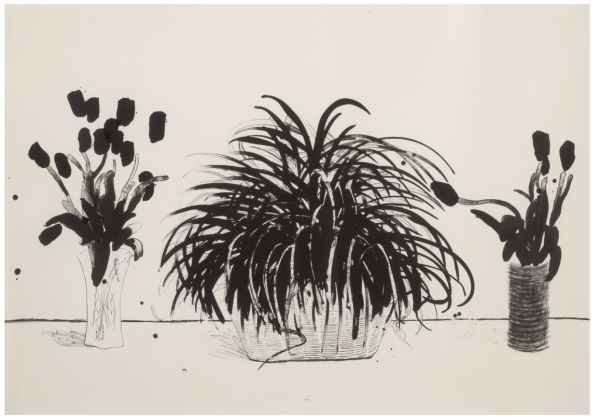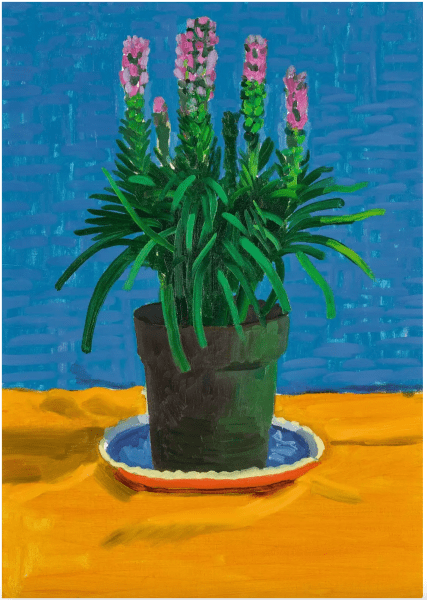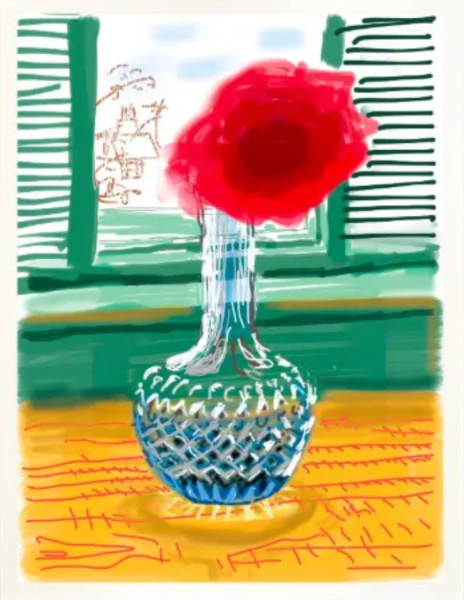Home Art Project 6: David Hockney’s Plants

David Hockney frequently paints or draws from his immediate environment with his works being imbued with a celebration of form and colour. Hockney’s work often explores the perception of space, colour and composition.
In Hockney’s “Jade Plant” above, we can see the influence of cubism in the strange distortion of what appeared to be a table that the pot is sitting on, and in the floor below. We can also see the influence of Vincent van Gogh, both in the boldness of colour combinations and in the way the lines are rendered around the plant stems in those curved stroke that describes form. The strong pinks of those stems stand out against the cerulean blue of the background. These colours sit opposite on the RGB, Red/Green/Blue colour wheel as complementary colours. Note that artists most often use the RYB Red/Yellow./Blue colour wheel for mixing paint.
The graphic power of Hockney’s work comes from:
clever placement and composition within the picture plain,
limiting of unnecessary detail,
broad use of marks used to describe form and texture,
the use of bold colours in clever combinations,
and a constant experimentation without over working.

This project is the drawing or painting of a plant while being mindful of the powerful graphic qualities that Hockney uses.
- Choose a a plant or object. Draw or paint it. Hockney sometimes uses an iPad, you may choose to also.
- Look at the form or shape of the plant and consider how it sits against a background. How can you place the plant shape on your page or canvas to get a good balance between the plant and its surroundings. If you are unsure, you can use the examples in Hockney’s work on this page as a guide.
- Looking at the colours you see, experiment on a piece of scrap paper to find colour combinations that work well. You can invent colours if you want to.
- How can the surroundings be simplified into effective plains or patterns?
- Are there patterns present or textures present that can be used in the composition?

David Hockney, Plant on Yellow Cloth, 1995, Oil on canvas, 66 × 45.7 cm
Children’s text
David Hockney often paints or draws from what he sees around him. He paints in bright colours and with strong simple shapes.
Hockney’s is good at:
clever placement and composition,
limiting of unnecessary detail,
broad use of marks used to describe form and texture,
the use of bold colours in clever combinations,
and a constant experimentation without over working.
This project is the drawing or painting of a plant in the style of David Hockney’s work.
- Choose a a plant or object. Draw or paint it. Hockney sometimes uses an iPad, you may choose to also.
- Look at the form or shape of the plant and consider how it sits against a background. How can you place the plant shape on your page or canvas to get a good balance between the plant and its surroundings. If you are unsure, you can use the examples in Hockney’s work on this page as a guide.
- Looking at the colours you see, experiment on a piece of scrap paper to find colour combinations that work well. You can invent colours if you want to.
- How can the surroundings be simplified?
- Are there patterns present or textures present that can be used in the composition?
